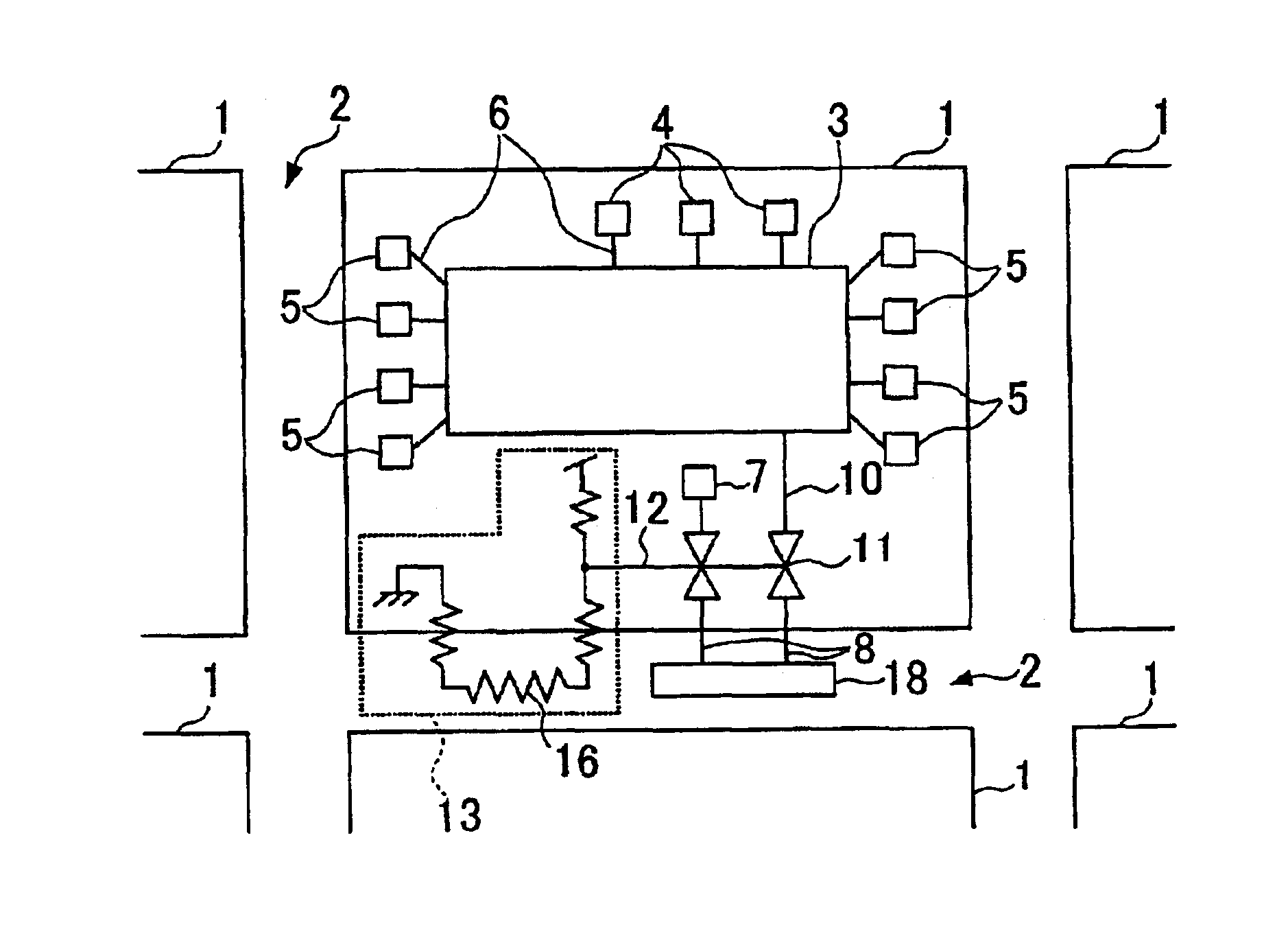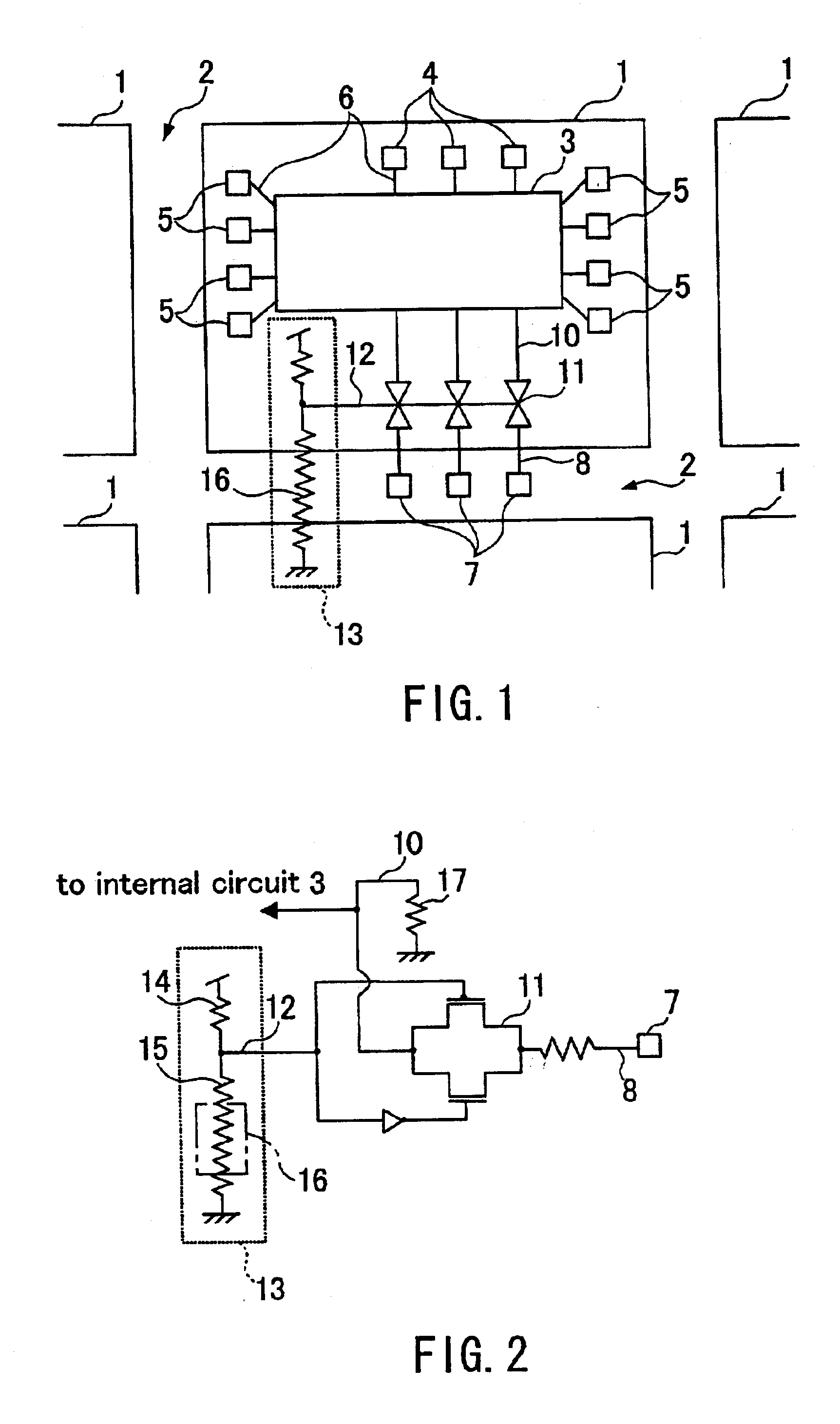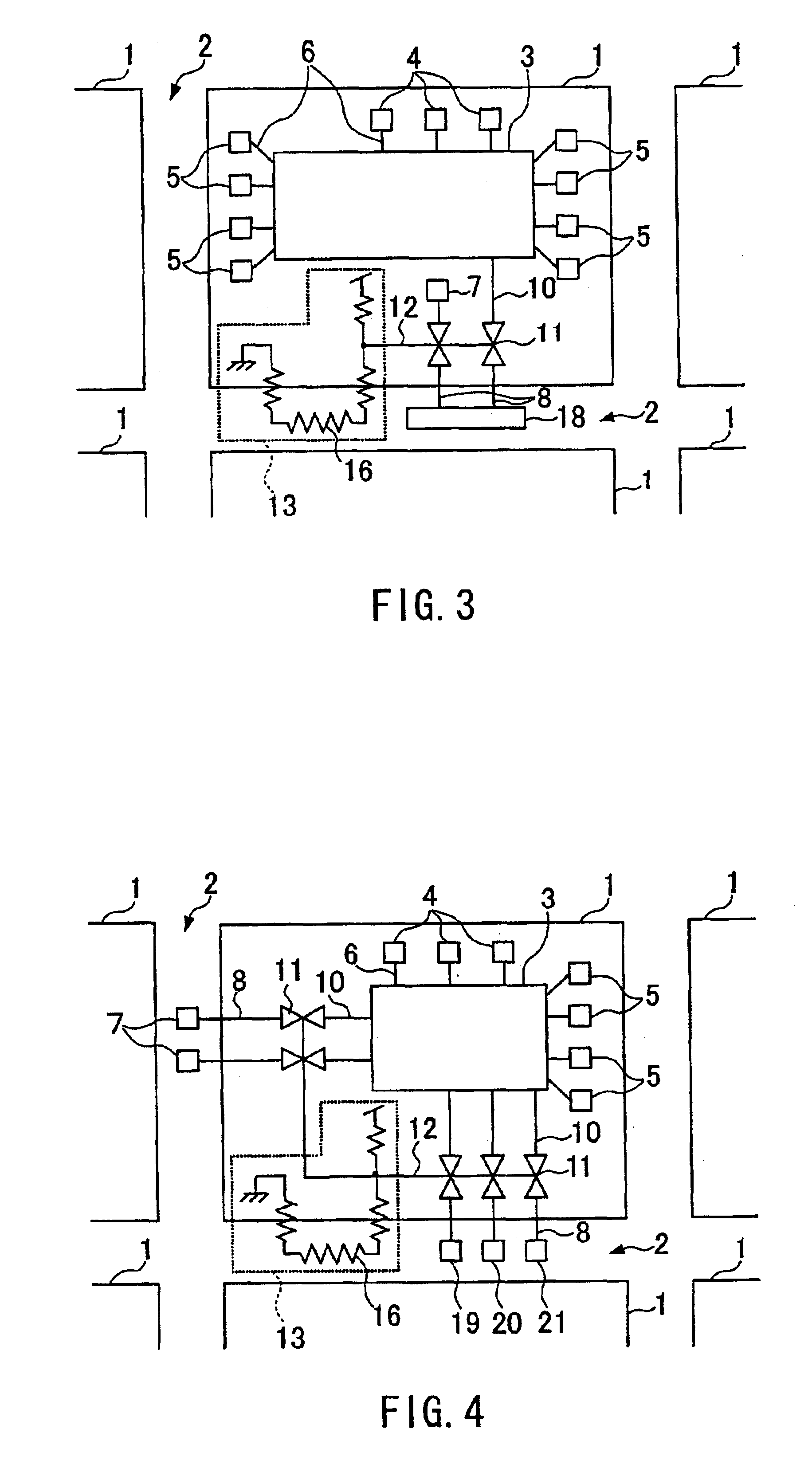Semiconductor device
a technology of semiconductor integrated circuits and devices, applied in the direction of individual semiconductor device testing, semiconductor/solid-state device testing/measurement, instruments, etc., can solve the problems difficult to individually and reliably cut off the fuses, and the risk of malfunctioning of the semiconductor integrated circuit b>1/b>, so as to achieve the effect of increasing the testing tim
- Summary
- Abstract
- Description
- Claims
- Application Information
AI Technical Summary
Benefits of technology
Problems solved by technology
Method used
Image
Examples
embodiment 1
FIG. 1 shows a semiconductor device according to Embodiment 1 of the present invention. This semiconductor device includes a plurality of semiconductor integrated circuits 1 and parting lines 2 formed on a semiconductor wafer. Testing pads 4 and bonding pads 5 are arranged in order to input and output signals between an internal circuit 3 formed in the semiconductor integrated circuit 1 and the outside, and connected to the internal circuit 3 via wires 6. In addition, testing pads 7 to be used only during test are arranged on the parting lines 2 and connected to the internal circuit 3 via wires 8, wires 10 and switches 11. The testing pads 7 are cut away when the plurality of semiconductor integrated circuits 1 are separated from each other by cutting along the parting lines 2.
The switches 11 are elements connecting and disconnecting the internal circuit 3 and the testing pads 7. Before the semiconductor integrated circuit 1 is cut apart along the parting lines 2 and separated, the ...
embodiment 2
FIG. 3 shows a semiconductor device according to Embodiment 2. In this semiconductor device, the area of the semiconductor integrated circuit 1 is reduced by arranging an testing circuit 18, which used to be arranged within the semiconductor integrated circuit 1, on the parting line 2. Also in this case, the switches 11 are arranged between the wires 8 and the wires 10 that connect the testing circuit 18 to the internal circuit 3. The switches 11 are turned on and off by the switching element 13 connected via the wire 12. The switching element 13 has a resistive element 16 arranged on the parting line 2. Accordingly, even when the testing circuit 18 is cut away during the separation along the parting line 2 and the cutting plane of the wire 8 is short-circuited with the ground power supply VSS, the power supply VDD or any of the other signal lines, it is possible to prevent the internal circuit 3 from being affected, because the resistive element 16 is cut off simultaneously and the...
embodiment 3
FIG. 4 shows a semiconductor device according to Embodiment 3. In this semiconductor device, the area of the semiconductor integrated circuit 1 is reduced by arranging pads 19, 20 and 21 for selecting the operation mode of the semiconductor integrated circuit 1 on the parting line 2.
The mode of operation of the semiconductor integrated circuit 1 can be changed by inputting and outputting signals to and from the operation mode selector pads 19, 20 and 21 at a predetermined timing. For example, in one mode of operation, it is possible to test memory, so that it becomes possible to read and write memory data by using the testing pad 4, the testing pad 7 or the like. Alternatively, in another mode of operation, it is possible to test digital circuit characteristics, so that it becomes possible to input and output data regarding the digital circuit characteristics by using the testing pad 4, the testing pad 7 or the like. Examples of means for changing these modes of operation are as fol...
PUM
 Login to View More
Login to View More Abstract
Description
Claims
Application Information
 Login to View More
Login to View More - R&D
- Intellectual Property
- Life Sciences
- Materials
- Tech Scout
- Unparalleled Data Quality
- Higher Quality Content
- 60% Fewer Hallucinations
Browse by: Latest US Patents, China's latest patents, Technical Efficacy Thesaurus, Application Domain, Technology Topic, Popular Technical Reports.
© 2025 PatSnap. All rights reserved.Legal|Privacy policy|Modern Slavery Act Transparency Statement|Sitemap|About US| Contact US: help@patsnap.com



